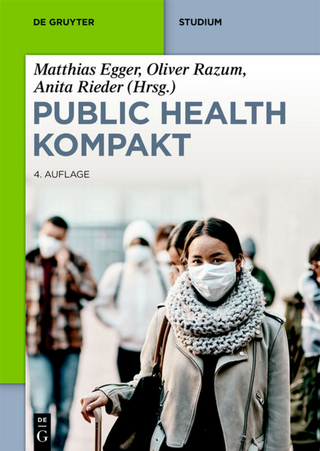
Modelling Survival Data in Medical Research
Chapman and Hall (Verlag)
978-0-412-44880-5 (ISBN)
- Titel ist leider vergriffen;
keine Neuauflage - Artikel merken
Data collected on the time to an event-such as the death of a patient in a medical study-is known as survival data. The methods for analyzing survival data can also be used to analyze data on the time to events such as the recurrence of a disease or relief from symptoms. Modelling Survival Data in Medical Research begins with an introduction to survival analysis and a description of four studies in which survival data was obtained. These and other data sets are then used to illustrate the techniques presented in the following chapters, including the Cox and Weibull proportional hazards models; accelerated failure time models; models with time-dependent variables; interval-censored survival data; model checking; and use of statistical packages. Designed for statisticians in the pharmaceutical industry and medical research institutes, and for numerate scientists and clinicians analyzing their own data sets, this book also meets the need for an intermediate text which emphasizes the application of the methodology to survival data arising from medical studies.
Survival Analysis
Special Features of Survival Data
Some Examples
Survivor Function and Hazard Function
Further Reading
Some Non-Parametric Procedures
Estimating the Survivor Function
Estimating the Hazard Function
Estimating the Median and Percentiles of Survival Times
Confidence Intervals for the Median and Percentiles
Comparison of Two Groups of Survival Data
Comparison of Three or More Groups of Survival Data
Stratified Tests
Log-Rank Test for Trend
Further Reading
Modelling Survival Data
Modelling the Hazard Function
The Linear Component of the Proportional Hazards Model
Fitting the Proportional Hazards Model
Confidence Intervals and Hypothesis for the ß's
Comparing Alternative Models
Strategy for Model Selection
Interpretation of Parameter Estimates
Estimating the Hazard and Survivor Functions
Proportional Hazards Modelling and the Log-Rank Test
The Weibull Model for Survival Data
Models for the Hazard Function
Assessing the Suitability of a Parametric Model
Fitting a Parametric Model to a Single Sample
A Model for the Comparison of Two Groups
The Weibull Proportional Hazards Model
Comparing Alternative Weibull Models
An Alternative Form of the Proportional Hazards Model
Further Reading
Model Checking in the Proportional Hazards Model
Residuals for the Cox Regression Model
Plots Based on Residuals
Some Comments and Recommendations
Identification of Influential Observations
Treatment of Influential Observations
Residuals for the Weibull Proportional Hazards Model
Identification of Influential Observations
Testing the Assumption of Proportional Hazards
Further Reading
Some Other Parametric Models for Survival Data
Probability Distributions for Survival Data
Exploratory Analyses
The Accelerated Failure Time Model
Log-Linear Form of the Accelerated Failure Time Model
Fitting and Comparing Accelerated Failure Time Models
The Proportional Odds Model
Further Reading
Time Dependent Variables
Types of Time-Dependent Variable
A Model with Time-Dependent Variables
Some Applications of Time-Dependent Variables
Comparison of Treatments
Two Examples
Further Examples
Interval-Censored Survival Data
Modelling Interval-Censored Survival Data
Modelling the Recurrence Probability in the Follow-Up Period
Modelling the Recurrence Probability at Different Times
Discussion
Further Reading
Sample Size Requirements for a Survival Study
Distinguishing between Two Treatment Groups
Calculating the Required Number of Deaths
Calculating the Required Number of Patients
Further Reading
Some Additional Topics
Non-Proportional Hazards
Model Choice
Informative Censoring
Multistate Models
Computer Software for Survival Analysis
Computational Methods Used in Packages for Survival Analysis
SAS
BMDP
SPSS
GLIM and Genstat
Illustrations of the Use of SAS, BMDP and SPSS
SAS Macros for Model Checking
Relative Merits of SAS, BMDP and SPSS for Survival Analysis
Appendix A: Maximum Likelihood Estimation
A.1: Inference about a Single Unknown Parameter
A.2: Inference about a Vector of Unknown Parameters
Appendix B: Standard Error of Weibull Percentiles
B.1: Standard Error of a Percentile of the Weibull Distribution
B.2: Standard Error of a Percentile in the Weibull Model
Appendix C: Two SAS Macros
C.1: The SAS Macro coxdiag
C.2: The SAS Macro weibdiag
References
Index of Examples
Index
| Erscheint lt. Verlag | 1.12.1993 |
|---|---|
| Reihe/Serie | Chapman & Hall/CRC Texts in Statistical Science |
| Verlagsort | London |
| Sprache | englisch |
| Maße | 152 x 229 mm |
| Gewicht | 608 g |
| Themenwelt | Studium ► Querschnittsbereiche ► Epidemiologie / Med. Biometrie |
| ISBN-10 | 0-412-44880-7 / 0412448807 |
| ISBN-13 | 978-0-412-44880-5 / 9780412448805 |
| Zustand | Neuware |
| Haben Sie eine Frage zum Produkt? |
aus dem Bereich


